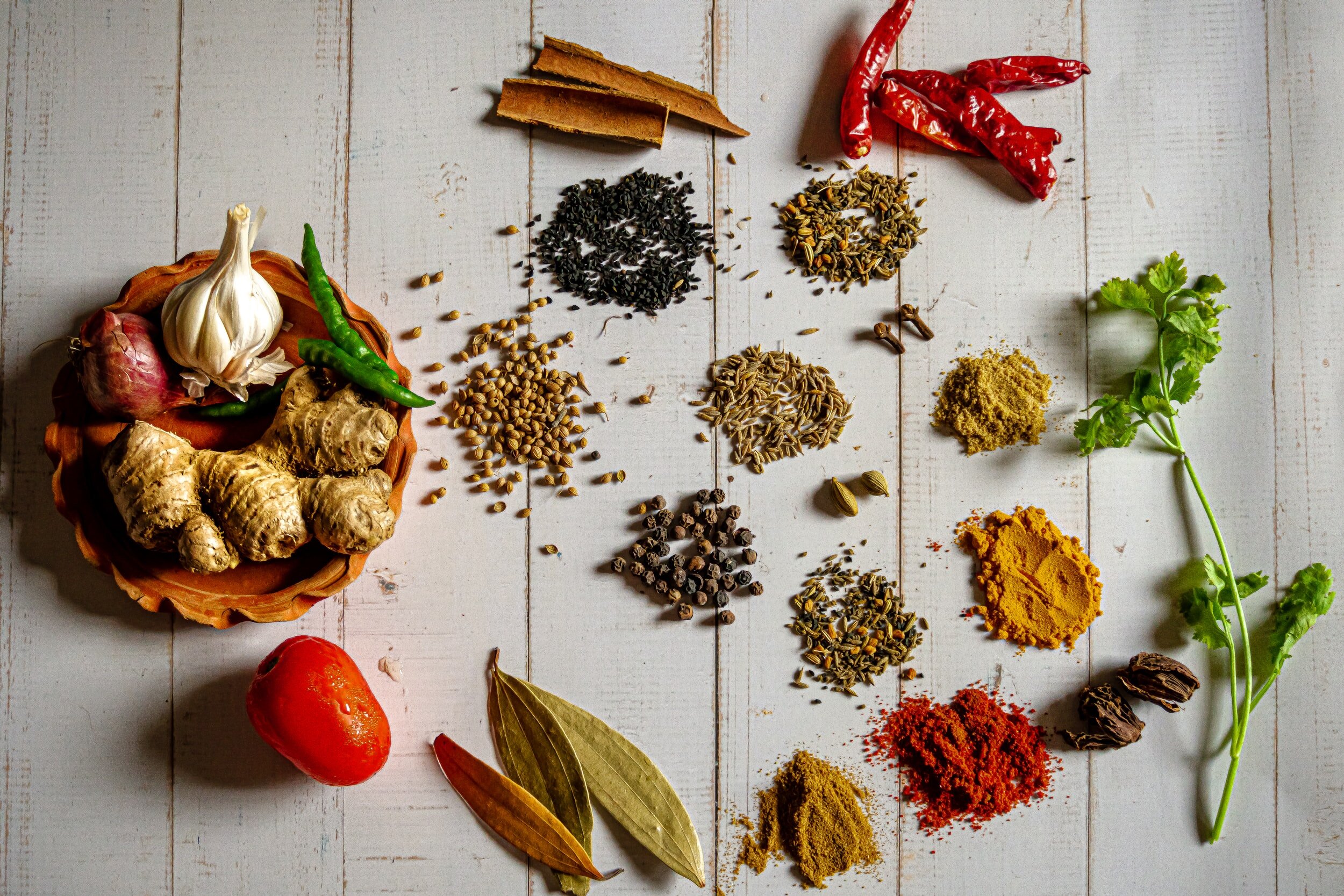Ten Things to Know About Indian Spices
Spices are the cornerstone of most Indian recipes, and learning how to cook Indian food starts with a basic understanding of spices and the role they play in this cuisine.
Used moderately in the right balance, Indian spices can turn an ordinary meal into a smorgasbord of flavors on your palate. It’s time to wake up the taste buds.
Many Indian Spices are Smoky, Not Spicy
An over spicy or bitter outcome to any recipe is mainly due to an unbalanced spice mix that uses too much red chili (which is actually spicy in taste) in the dish. My recipe for Homemade Baingan (Eggplant) Bharta is a good example of blending smoky and spicy flavors.
The Three Forms of Spices are
Fresh spices (think ginger, garlic, green chili, curry leaves), whole dried spices (cumin seeds, coriander seeds, mustard seeds, red chili, nutmeg, cardamom) and of course, the most popular form in Indian cooking is the roasted and ground version (red chili, cumin, turmeric, fenugreek). Read more on Chili Peppers in this article.
The Most Commonly Used Indian Spices are
For beginners to Indian cooking, a little goes a long way, especially if you are using the Simply Bhonu Garam Masala, our blend of seven aromatic spices. My top favorites are cumin, red chili, turmeric, coriander, cardamom, cinnamon, nutmeg, and garam masala. If you keep just these spices in your pantry, you will be ready for most of your Indian food cravings.
Spice Blends Work in Ratios
Most native Indian food cooks have created their own ratio for each dish over the years, knowing that some dishes demand more of one spice over another. Take a look at my Saag Curry (spinach) recipe as an example. When you start making Indian food at home, this can pose a challenge, but practice makes it simpler to gauge the ratio of spices.
Garam Masala, an Essential Blend
Made using many comforting spices like cinnamon, cardamom, cloves, nutmeg, cumin, and black pepper (the list can be long); garam masala differs across India based on the regional cuisine. It’s the spice that brings all the flavors together in a recipe and should always be used sparingly. Buy it from our store or use my homemade Garam Masala recipe.
The Magic of Black Pepper
There’s a reason explorers came to India looking for black pepper! You will rarely find an Indian recipe that asks you to season meat or vegetables with black pepper like a Western recipe. This is because black pepper is already a key ingredient in most blended spices like garam masala, chai tea masala, vindaloo masala, and so on. Look for the Malabar Tellicherry variety, which comes from Southern India (the principal exporter of black pepper), in a pepper grinder for use in your tikka and kebab.
Add Acidic Ingredients After Roasting Spices
An important tip when you start cooking Indian food at home is to completely cook spices and let them blend in together with the aromatics like onion, ginger, and garlic first before you add the acid elements (tomatoes, vinegar, lemon, lime) to the dish. Acid slows the cooking of the spices, and you could end up with a raw spice flavor. This is how the cooking steps look in an Indian recipe.
Store Spices in Glass Bottles
Exposure to moisture, air, and heat reduces the shelf life of ground spices. Once opened, they are best stored in glass bottles in the pantry. Plastic tends to get discolored over time by absorbing the spice’s color and flavor.
Shelf Life: Let Your Nose Guide You
Ground spices can technically be kept for 1-2 years, and whole ones last even longer. It all depends on their packaging, how well you store them, and how many times they have been exposed to air and moisture. If you can smell the spice while roasting in the pan, it works. Spice blends like Garam Masala have a shorter lifespan and are generally sold in small packs.
Health Benefits of Spices
Generations have revered the numerous benefits of Indian spices. They are antioxidant-rich and offer high levels of vitamins B & C as well as minerals and iron. From turmeric’s anti-inflammatory properties to ginger’s digestive properties, and red chili pepper and garlic’s link to inhibiting cancer, the list of benefits is increasing every day.
Masala Dabba
the Indian Spice Box
My piece on spices would be incomplete without a mention of the quintessential ‘Masala Dabba’, found in most Indian homes. Generally, a circular stainless steel box with six to eight small bowl inserts, it is filled with small quantities of the most commonly used spices in Indian homes (in my home, the five listed above plus a few whole spices like cumin seeds and mustard seeds.)
Growing up, I would see my mom holding the ‘Masala Dabba’ in her hands like an artist’s palette, filled with amazing colors. With a thoughtful expression on her face, she would put a little bit of this and a little bit of that till the perfect blend of aromas was achieved. The final piece would always be worthy of display as the centerpiece on our dinner table.



